Sustainable Tourism
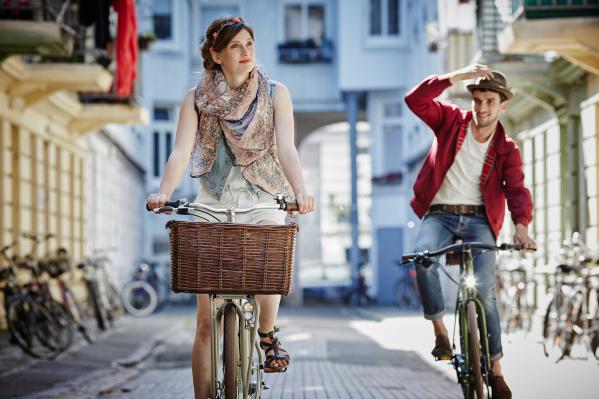
Demand for eco-tourism and sustainable travel is also growing in Germany. According to a 2021 study, three-quarters of German travellers see sustainable travel as important. More and more travel providers are using legally binding environmental and social standards in their branding, supported by the associated certificates and labels. These relate to the sparing use of natural resources such as water, for example, climate-friendly transport, reducing waste, and involvement in species protection projects. Organic farms offer holiday rooms with regional and seasonal menus, while eco campsites promote conservation and environmentalism.
Travellers in Germany love spending time in its rich and varied natural environments, such as the 103 natural parks and 16 UNESCO biosphere reserves. Everyone should be able to get around easily in Germany. To this end, many initiatives ensure that people with disabilities can travel without restrictions in Germany.
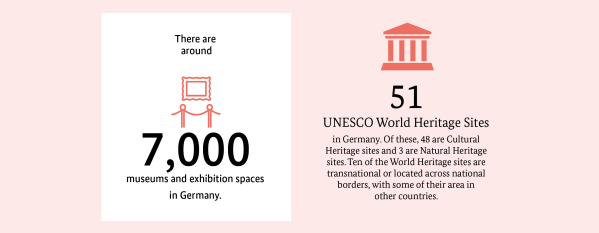

Related content
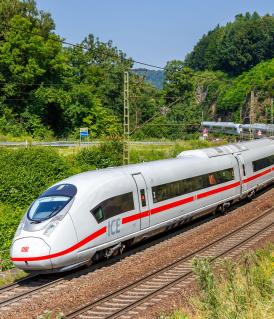

How to Explore German History, Architecture, and Delicious Food on a Green Vacation
Reap the rewards of rich culture, natural splendor, easy (and pleasant) transportation, stylish accommodations, and world-class dining on a sustainable trip through three german cities: dresden, bremerhaven, and weimar..
- Copy Link copied

Grand Baroque details at Zwinger Palace in Dresden
Photo by Charissa Fay
There are always many decisions to consider when planning a vacation—traveling sustainably means making choices that respect and protect the communities and environment you visit too. I experienced first-hand how rewarding it can be to travel this way when I took a sustainability-focused road trip in Germany earlier this fall. Exploring local culture, enjoying natural green spaces, and learning from local innovators made for an ideal holiday, and it was all easy to do with so many eco-friendly options throughout Germany .
Traveling by rented electric vehicle and Deutsche Bahn trains, staying in sustainable hotels, and eating local vegan cuisine, I explored Dresden and Bremerhaven with a stop in Leipzig. And I learned about Weimar , another intriguing city that’s a significant destination for design, with a sustainable ethos. As a design fan alone, I’d love to visit Weimar and my recent green trip cemented the rewards of traveling to green places.
What makes designing an eco-itinerary in Germany so simple is the abundance of ways to support the ongoing well-being of local communities, economies, and environments. Numerous hotels follow sustainable practices such as reducing emissions and conserving resources. Electric vehicles and public transportation reduce energy use and pollution. Many German cities offer walkable and bikeable green oases , electric mobility, and innovative activities focusing on intercultural understanding and sustainably restored historic buildings. And prioritizing organic and vegan cuisine protects biodiversity. In Germany, you’ll find plentiful options for a well-rounded vacation that also helps sustain the places you visit.
Dresden’s architectural wonders
My first stop was Dresden, which I can’t recommend enough for its mix of history, architecture, green innovation, and lovely expansive parks. Located on the left bank of the Elbe River, Dresden’s historic center features magnificent structures from the Renaissance, Baroque period, and 19th century. Despite devastation from WW II, the Altstadt (Old Town) has been carefully restored.
For a quiet morning stroll, go to see Dresden’s historic buildings bathed in golden light. The Frauenkirche (Church of Our Lady) was built in the 1700s, destroyed during the Allied firebombing in 1944, and rebuilt from 1993-2005. One of the most recognizable landmarks in Dresden, the Baroque dome offers 360-degree views over the city.
Zwinger Palace is another excellent example of Baroque architecture and among Germany’s most important. It’s a monumental complex built by Augustus the Strong in the 1700s for royal festivities and now houses three museums, including the Old Masters Picture Gallery, one of the world’s most renowned collections of paintings.

Dresden’s historic Old Town in morning light
Originally built in the 1500s, the Royal Palace was where Saxon electors and kings lived. Today, you can see the reconstructed palace rooms and extensive armory collection, plus check out the impressive Procession of Princes , on the exterior wall of the palace, the world’s largest porcelain mural. Afterwards, stop by one of the many charming cafés, like the Coselpalais Café in a historic building built in 1765, and try the Dresdner Eierschecke, a delicious Saxon dessert with three layers: a cake base, a middle layer of quark cheesecake, and vanilla custard on top. Supporting a local business while sampling regional cuisine is the kind of mindful travel experience that’s readily available in Dresden and beyond.
Outdoor delights in Dresden
Thanks to historic architecture paired with unusually broad expanses of nature and outdoor space, Dresden is at the top of the list of unique cities I’ve visited. Forest and greenery make up 62 percent of the city, one of Europe’s greenest. Dresden Heath, known as the “green lung of Dresden,” is a 19-square-mile nature preserve and recreation area with hiking trails and wild animals in the middle of town. The haven is a fantastic example of how Dresden, and Germany as a whole, protects nature and gives residents a place to renew their spirits.

Elbe Meadows paths are a breath of fresh air in Dresden
A must-see is the Elbwiesen, or Elbe Meadows, wide green lawns with paths on both sides of the river. It’s typically filled with locals enjoying a picnic, canoeing, watching an outdoor film or concert, or visiting vineyards and beer gardens. See it all from a different perspective on a steamboat ride with Sächsische Dampfschifffahrt , the world’s largest and oldest paddle steamer fleet. Sip a coffee or German beer while floating down the Elbe, appreciating the natural beauty.
Touring Dresden and its green spaces by bike with RollOn (or you can also try MOBIbike ) was a fun way to see the city that I could feel good about too. For travelers who want to lessen their environmental footprint, Dresden has one of the most comprehensive public transportation networks in the country with bike- and car-sharing programs, electric vehicles, trains, trams, buses, scooters, and ferries. The city is so green that most people who live there don’t need a car, which limits fossil fuel use and pollution.
Delicious Dresden dining
Dresden also offers a vibrant food scene with many vegan and organic dishes that focus on local ingredients and regional dishes. There’s an abundance of innovative, well-known restaurants lining the Neustadt district, including Altes Wettbüro where I enjoyed organic vegan dishes and wine.
Lila Soße is another favorite for modern German cuisine made using ingredients sourced nearby. And the city’s oldest vegan restaurant, Falscher Hase, is known for hearty vegan food including a tomato seitan burger—the best veggie burger I’ve had. I also highly recommend a stop at Pfunds Dairy, a cheese and dairy store covered in stunning handcrafted tiles made in Germany in the 1800s.

The Pfunds Dairy store in Dresden offers local cheese and other dairy products.
Exploring seaside in Bremerhaven
My next stop was the beautiful seaside city of Bremerhaven on the northern coast of Germany. The city plays an important role in German and European maritime history and boasts a high concentration of world-class museums, affording accessible opportunities for intercultural understanding. In fact, the coastal destination is known for its Havenwelten (Harbor Worlds) and Wissens- und Erlebniswelten (Worlds of Knowledge and Experiences).
One of the biggest ports in Europe and providing access to the North Sea, Bremerhaven is one of Germany’s most important harbor cities. Start off your tour of Havenwelten by visiting the observatory platform at the Atlantic Hotel Sail City for 360-degree views of the Weser River and the harbor area. Then head to the nearby Maritime Museum and marvel at the medieval Bremen cog ship from 1380, the world’s best-preserved merchant ship of the Middle Ages. It was discovered in the harbor mud. Afterwards, walk through a decommissioned U-boat, the Wilhelm-Bauer.
For dinner, I recommend the Treffpunkt Kaiserhafen restaurant in the industrial port area. Nicknamed “the last pub before New York,” it’s where emigrants would come before setting sail. Today it’s a small rustic pub with warm service, maritime decor, an energetic ambience, and hearty comfort food. Another local favorite is the Salondampfer Hansa. You’ll feel like a captain as you dine on seafood in a steamship from the 1930s with elegant, wood-paneled rooms and cozy banquettes.
Bremerhaven’s enlightening experiences
The Wissens- und Erlebniswelten side of the city is famous for multiple first-rate museums that bring culture to life. One of my favorites was the German Emigration Center , highlighting the millions of Europeans who relocated to the U.S. from Bremerhaven. As Melf Grantz, Lord Mayor of Bremerhaven, says, “Since Bremerhaven was founded, immigrants have shaped the cityscape…We couldn’t ask for another museum that reflects this history more appropriately than the German Emigration Center.” The interactive museum recreates the experiences of the journey, sharing moving stories and memorabilia and bringing more than 300 years of emigration to life. The museum also participates in education and applied migration research.

The German Emigration Center in Bremerhaven is one of many that foster intercultural understanding.
Another standout museum is the innovative Klimahaus (Climate Experience Center), an interactive museum and science center focusing on climate, climate change, and weather. The hands-on experience creatively enables intercultural learning by showing you how people living along the eighth longitude are affected by their climate as you “travel” through five continents and nine climate zones. Plus, the museum’s electricity is 100 percent from renewable sources. You can also stop by The Zoo at the Sea, which is committed to nature conservation and species protection.
Green hospitality, restaurants, and businesses in Bremerhaven

The sail-shaped profile of Atlantic Hotel Sail City in Bremerhaven
Of the plethora of Bremerhaven hotels leading the way in sustainable offerings, Atlantic Hotel Sail City Bremerhaven is committed to its “Green Sail” eco-initiatives. Since 2013, the sail-shaped hotel has implemented more than 500 measures to conserve resources, greatly reduced its carbon footprint, and committed to the United Nations’ 17 Sustainable Development Goals. At the onsite Panorama Restaurant Strom, their seasonal menus source mostly from regional purveyors, and they minimize their packaging and raise awareness for food waste.
You’ll also find a variety of excellent vegan and organic food to choose from here. Speisesaal at the German Emigration Center is a must. Enjoying the delicious vegan food in the sunny cafe is wonderfully relaxing. I also visited the Geestemünde Farmer’s Market with produce from nearby farms, plus pastries, bread, meat, cheese, coffee, and plants—the apples I bought there were fantastic!

Bremerhaven Segelmacher owner and designer Eva Erkenberg
Green travel also means supporting local small businesses of which there are many in Bremerhaven. Entrepreneurs following their passions include designer Eva Erkenberg at Bremerhavens Segelmacher . Upcycling old sails into new products such as tote bags, notebooks, and placemats, Erkenberg and her craftsmanship celebrate Bremerhaven maritime history—and make perfect souvenirs.
Where design meets sustainability in Weimar and beyond
If you’re looking for other green cities in Germany, Weimar is another great choice with its design heritage and eco-conscious lifestyle. See the first Bauhaus exhibit at the Bauhaus Museum, stop by one of the many UNESCO World Heritage sights, then visit one of the city’s many parks. And since staying a bit longer in one destination makes travel more sustainable, investigate the Weimar Card Plus, which includes admission to museums in Weimar and Thuringia.

The Bauhaus Museum in Weimar
Photo by Thomas Müller
During my road trip, I also stopped in Leipzig, another destination that offers many green travel options. I visited St. Thomas Church and if you have more time, you can kayak on the Weiße Elster and visit industrial buildings that have been rebuilt as innovative arts and culture centers such as Spinnerei, Tapetenwerk, or Kunstkraftwerk.

Johann Wolfgang von Goethe’s Gartenhaus, the poet’s former main residence and workplace
Photo by Luca Klingele/Weimar
On this trip, I discovered how many sustainable options are available in Germany to create a rich, well-rounded, and meaningful trip. It felt so good knowing that my travel was supporting conservation efforts, intercultural education, efficient transportation, eco-friendly accommodations, organic and vegan cuisine, local small businesses, and innovative science and technology. I wholeheartedly recommend Germany to green travelers who want to combine cultural experiences with sustainability.


Germany’s ‘Feel Good’ campaign boosts sustainable travel
The COVID-19 pandemic has made travellers around the world even more concerned about sustainability. Unspoilt nature, careful use of resources and a focus on wellbeing are gaining in importance. The German National Tourist Board (GNTB) is picking up on this trend and expanding the scope of its ‘Feel Good’ campaign in 2021. The GNTB is promoting Destination Germany’s wide range of sustainable tourism offerings.
The ‘Feel Good’ initiative illustrates the various sustainable tourism offerings across the country, while providing guidelines on how to still visit the natural landscapes, urban attractions, and historical sites that Germany is popular for. An area of dialog, almost 58 per cent of Indian consumers are aware of the various implications currently impacting the environment, with interest in information on health and the environment are high on their agenda and making sustainable trips to the cities and wider regions without having to compromise on safety or fun according to a study by GlobalWebIndex (GWI).
Petra Hedorfer, CEO of the GNTB said: “The latest Sustainability Report by Booking.com shows that the COVID-19 pandemic has significantly accelerated the shift in travellers’ values towards wellbeing, sustainability and social responsibility. 83 per cent of the respondents from the 30 countries surveyed believe that sustainable travel is vital, while 61 per cent said that the pandemic has made them want to travel more sustainably in the future. This shift in customer expectations demonstrates that we are on the right track with our long-term strategy to position sustainability as a facet of the Destination Germany brand. The ‘Feel Good’ campaign in the international source markets showcases sustainable, high-quality products with the aim of boosting the restart of inbound tourism.”
“Germany’s towns, cities and regions are alive, and enjoys an excellent position based on the perception of Germany when it comes to sustainability. The things that are worth protecting are preserved and breaking a new ground in sustainable tourism,” Romit Theophilus, director for India at German National Tourist Office said.
While the concept of veganism isn’t a new one, it was in 2019 that veganism started making its way into the mainstream. From consuming local vegan diets to putting up at vegan friendly hotels, many Indian travellers are embracing the idea of a vacation experience which is animal cruelty-free and are likely to book a place if it has green credentials.
‘Feel Good’ in 2021
The GNTB campaign includes a selection of cities, regions and accommodation providers that are particularly committed to sustainability in tourism. The ‘Feel Good’ campaign also showcases specific travel experiences that bring sustainable products and services at the destination to life. These experiences allow travellers to engage with locals and discover sustainability at first hand. Four clusters have been created to better outline the offerings: ‘Active Outdoors’, ‘Education and Experiences’, ‘Responsible Enjoyment’ and ‘Sustainable Experiences in Towns and Cities’. Tips for sustainable travel complement the information on offer, while a multilingual CO2 calculator enables travellers to document their trip’s emissions and offset them through their local schemes.
Eco-friendly, experience-oriented travel for all
Germany’s transport system offers plenty of options. Its network is huge with connections to remote places and regions. So, it’s perfect for seamless, eco-friendly, experience-oriented travel, not to mention a stress-free journey to the destination and a relaxing stay.
German regions and destinations always have great ideas on how their guests can explore the local area using convenient eco-friendly methods. In larger cities, for example, there are bike hire facilities, electric bikes and electric scooters available alongside the usual bus and train networks. Athletic tourists will be pleased to hear that buses and trains stop at the best remote cycle paths and hiking routes. If you’ve left your own bike at home, you can hire trekking or mountain bikes one can even choose electric ones. Visitors can also get out on the water on paddleboards, canoes or kayaks some places even have climate-neutral solar-powered boats.
Commitment to sustainability
As a premium partner, Deutsche Bahn is heavily involved in delivering the ‘Feel Good’ campaign. Germany’s national rail provider has initiated numerous measures to protect the climate, nature and resources, reduce noise pollution and meet its sustainability goals.
GNTB to focus on sustainable inbound tourism at ATM 2023
Germany rolls out new nature tourism campaign
Vacationer confidence in Germany’s COVID-19 safety soars as it ranks lowest in…
Since you're here...
...there are many ways you can work with us to advertise your company and connect to your customers. Our team can help you design and create an advertising campaign
We can also organize a real life or digital event for you and find thought leader speakers as well as industry leaders, who could be your potential partners, to join the event. We also run some awards programmes which give you an opportunity to be recognized for your achievements during the year and you can join this as a participant or a sponsor.
Let us help you drive your business forward with a good partnership!
Yes, contact me I want to download the media kit
Comments are closed.
LATEST STORIES

Traveloka partners with Cebu Pacific
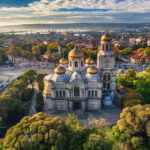
Wizz Air announces new route from London Gatwick to Varna, Bulgaria
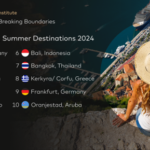
Travel soars even as 'leisure for longer' gets popular : Mastercard "Travel Trends 2024" Report

Cross Hotels & Resorts launches Lumen in Bangkok’s newest district
Welcome, Login to your account.
Sign in with Google
Powered by wp-glogin.com
Recover your password.
A password will be e-mailed to you.
Welcome back, Log in to your account.
SIGN UP FOR FREE
Be part of our community of seasoned travel and hospitality industry professionals from all over the world.
- LOGIN / SIGN UP
- Middle East
- UK & Europe
- USA & Canada
- Hospitality
- HR & Careers
- Luxury Travel
- MICE (Meetings, Incentives, Conferencing, Exhibitions)
- Travel Tech
- Travel Agents
- Airlines / Airports
- Conferences
- Cruising (Ocean)
- Cruising (River)
- Destination Management (DMC)
- Hotels & Resorts
- Hotel Management Company
- Hotel Technology
- HR / Appointments
- Meetings, Incentives, Conferencing, Exhibitions (MICE)
- Travel Agents (all)
- Travel Technology
- Tourism Boards
- TDM Travel Show
- Industry appointments
- Travel Bloggers
- Podcasts – Features
- How to join
- RSVP Portal
- Event Photos/Videos
- Competitions
- Middle East September 2024
- Thailand October 2024
- Destination NaJomtien BanAmphur BangSaray *NEW*
- จุดหมายปลายทาง นาจอมเทียน หาดบ้านอำเภอ บางเสร่ *NEW*
- South Australia Reward Wonders *NEW*
- Ponant Yacht Cruises and Expeditions
- Encore Tickets (Chinese Guide)
- Affordable Luxury in Thailand by Centara Hotels
- Rising Above the Oridinary by Conrad Bangkok
- The Best of Thailand
- Who is IWTA
- Philippines
- Recommend Someone
- Recommend yourself
- IWTA Awards
- TRAVEL CLUB
- News & Events
- Eastern and Southern Africa
- Eastern Europe and Central Asia
- Mediterranean
- Mexico, Central America and the Caribbean
- North America
- South America
- West and Central Africa
- IUCN Academy
- IUCN Contributions for Nature
- IUCN Library
- IUCN Red List of Threatened Species TM
- IUCN Green List of Protected and Conserved Areas
- IUCN World Heritage Outlook
- IUCN Leaders Forum
- Protected Planet
- Union Portal (login required)
- IUCN Engage (login required)
- Commission portal (login required)
Data, analysis, convening and action.
- Open Project Portal
- SCIENCE-LED APPROACH
- INFORMING POLICY
- SUPPORTING CONSERVATION ACTION
- GEF AND GCF IMPLEMENTATION
- IUCN CONVENING
- IUCN ACADEMY
The world’s largest and most diverse environmental network.
CORE COMPONENTS
- Expert Commissions
- Secretariat and Director General
- IUCN Council

- IUCN WORLD CONSERVATION CONGRESS
- REGIONAL CONSERVATION FORA
- CONTRIBUTIONS FOR NATURE
- IUCN ENGAGE (LOGIN REQUIRED)
IUCN tools, publications and other resources.
Get involved
IUCN and German government support post-COVID recovery through sustainable tourism initiative
Marseille, France, 5 September 2021 (IUCN) – At the IUCN World Conservation Congress in Marseille, IUCN and the German development agency GIZ today announced a new programme to strengthen the resilience of community-based tourism in and around protected and conserved areas worldwide. Through the programme, the German government is investing up to 17 million Euros to boost the recovery from the impacts of COVID-19 on people and nature.
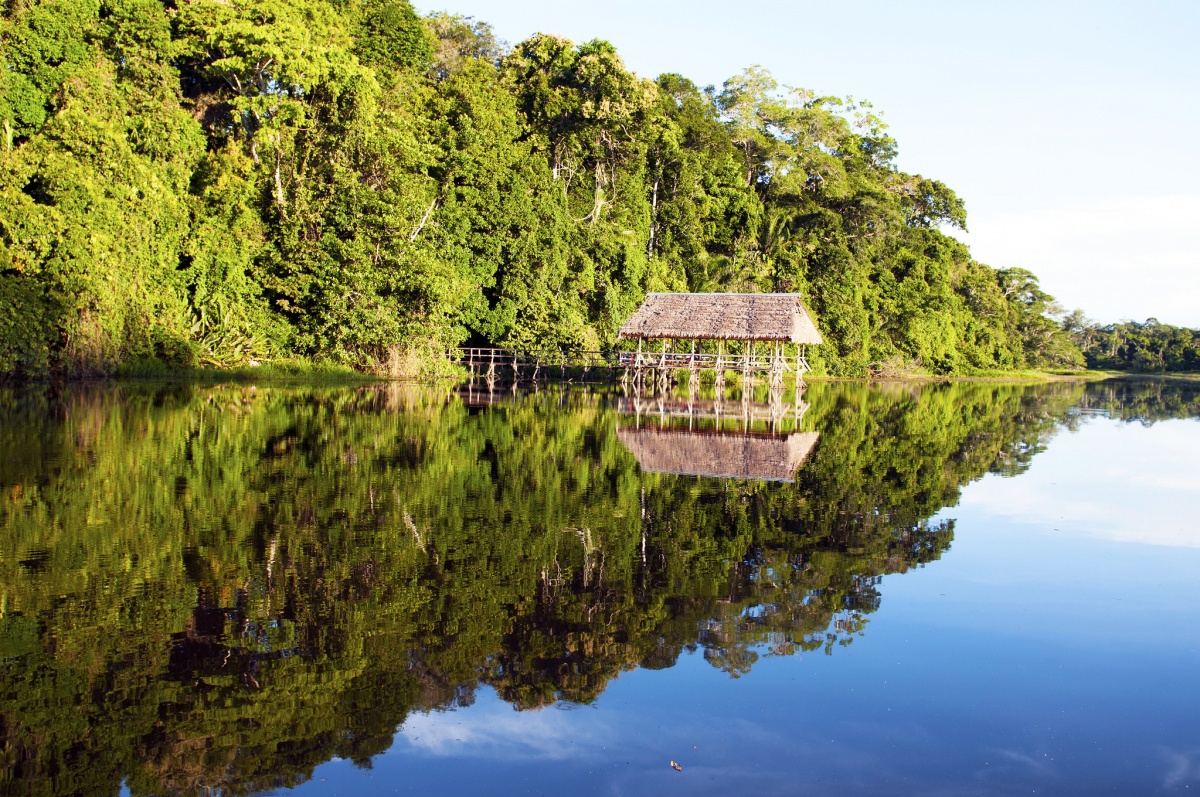
Photo: Íñigo Maneiro
“Protected areas play a crucial role in maintaining the health of the planet and our health as a species, and are critically important in conserving biodiversity, ecosystem services and mitigating impacts of natural disasters and climate change. Through this project, IUCN provides a lifeline to local communities who are unable to finance their vital nature conservation operations after decades of reliance on ecotourism ventures to supplement meagre budgets,” says James Hardcastle, Associate Director, Global Protected Areas Programme, IUCN .
The programme, which is funded by the German Federal Ministry of Economic Cooperation and Development (BMZ) and includes implementing partners such as UNESCO and the WWF, will use tourism as an instrument to contribute to sustainable development in developing and emerging countries.
To pilot the initiative, IUCN will work with two World Heritage sites and five other protected areas in Peru and Vietnam to increase the resilience of the community-based tourism sector to future disruptions. This will include engaging local communities and indigenous peoples in developing community-based ecotourism action plans, and revising site management plans to include detailed tourism destination and visitor management protocols and guidance.
Through a dedicated ‘cash for work’ scheme under the initiative, local people who are dependent on nature tourism will be able to earn a supplementary income as their community prepares for the return of tourists, e.g. by restoring trails or other infrastructure or by collecting marine plastic. IUCN will also provide training for protected area managers and local entrepreneurs on tourism recovery measures, One Health principles, safeguards and strategies post-COVID-19, itinerary and product development and promotion for small-scale visitor management.
Experiences gathered in the pilot sites will then inform further action for community-based tourism solutions and the role of community-based tourism in pandemic recovery and prevention in and around protected areas on a global scale.
"The Corona-Tourism-Package of the German Federal Government aims to retain the structures of the tourism sector and to empower local actors to offer products and services in tourism. In the spirit of "build back better", the aim is also to improve the ecological and social aspects of tourism and to achieve improved resilience. The measures are closely tailored to the needs of the local people. The entire program addresses 26 countries that are particularly badly hit by the COVID-19 pandemic," said Lucia De Carlo, Head of the Division for the Cooperation with the Private Sector and Sustainable Economic Policy at the BMZ, which supports the project.
The COVID-19 pandemic has caused a global crash in international tourism, especially to remote and wild places that rely on tourism revenues to support local livelihoods. As around one in ten employees in the world has a job directly related to this sector, economic losses due to the drying up of tourism have been forecast to be in the trillions, with developing countries being hit the hardest.

Sign up for an IUCN newsletter

Travel Guide
- Things to Do
- Entry Requirements & Customs
- Getting Around
- Regions in Brief
- Calendar of Events
- Tips on Accommodations
- Getting There
- Escorted & Package Tours
- Special-Interest Vacations
- Staying Safe
- Health & Insurance
- Sustainable Travel & Ecotourism
- Tips for Gay and Lesbian Travelers
- Tips for Senior Travelers
- Tips for Travelers with Disabilities
- Suggested Itineraries
- Traveler's Guide to Art & Architecture
Sustainable Travel and Ecotourism in Germany
Germans, with some justification, consider themselves in the avant-garde of green travel. In the postwar years they became a front-runner in preserving their environment and protecting nature.
"Germans are known for recycling and reusing their natural resources," said Berlin activist Hans Welder.
In Germany, more and more systems are going into place to generate energy from wind and solar power.
Germans didn't exactly invent walking or hiking across their countryside, but you would think so when you notice the numbers of citizens who prefer this form of exploration. It's a way to stay in good health, enjoy nature, and avoid harming the environment, all at the same time.
Trails in Germany are often signposted, cutting through all areas of the country, from tidal shores to low mountain regions, with tours offered to some of the more difficult-to-reach points along mountaintops.
The outdoor enthusiast might want to concentrate on Germany's national parks. Our favorite of these biosphere reserves is the Bavarian Forest National Park in the south and the Harz National Park in Lower Saxony and Saxony-Anhalt.
For general data about the parks of Germany, consult Nationalpark Service .
If you're interested in camping, check the Great Outdoor Recreation Page (www.gorp.com) before you go. It has some fine data not only on camping but also on ways to enjoy the landscapes of Germany.
Reliable organizations devoted to eco-tourism include Biosphefere Expeditions and Earthwatch .
An unusual offering for the true green visitor is provided by Willing Workers on Organic Farms (WWOOF) . The organization's name says it all -- participants get free room and board at a variety of organic farms throughout the country, but they must be willing to work for their supper.
One of the best ways for the green traveler in Germany is to take a tour from one bio hotel to another. These jaunts take you to the most scenic parts of the country, ranging from Lüneburg in the north to the Bavarian Forest in the south. For information and a list of these places to stay, check www.biohotels.info .
Increasingly popular is spending a vacation on a German farm, a welcome alternative for families with children. Sometimes guests can help with the activities, such as feeding the cows or helping with the harvest. Some lodgings are no longer working farms but have been turned into tranquil guesthouses with typical regional charm. Find out more about this type of holiday by searching www.landreise.de .
Note : This information was accurate when it was published, but can change without notice. Please be sure to confirm all rates and details directly with the companies in question before planning your trip.

- All Regions
- Australia & South Pacific
- Caribbean & Atlantic
- Central & South America
- Middle East & Africa
- North America
- Washington, D.C.
- San Francisco
- New York City
- Los Angeles
- Arts & Culture
- Beach & Water Sports
- Local Experiences
- Food & Drink
- Outdoor & Adventure
- National Parks
- Winter Sports
- Travelers with Disabilities
- Family & Kids
- All Slideshows
- Hotel Deals
- Car Rentals
- Flight Alerts
- Credit Cards & Loyalty Points
- Cruise News
- Entry Requirements & Customs
- Car, Bus, Rail News
- Money & Fees
- Health, Insurance, Security
- Packing & Luggage
- -Arthur Frommer Online
- -Passportable
- Road Trip Guides
- Alaska Made Easy
- Great Vacation Ideas in the U.S.A.
- Best of the Caribbean
- Best of Mexico
- Cruise Inspiration
- Best Places to Go 2024

The plastic waste stream must be tackled at its source
Comment by Evita Hegmann , Johanna Katharina Mützel , Maro Luisa Schulte
Sustainable tourism in Germany: status quo and future developments
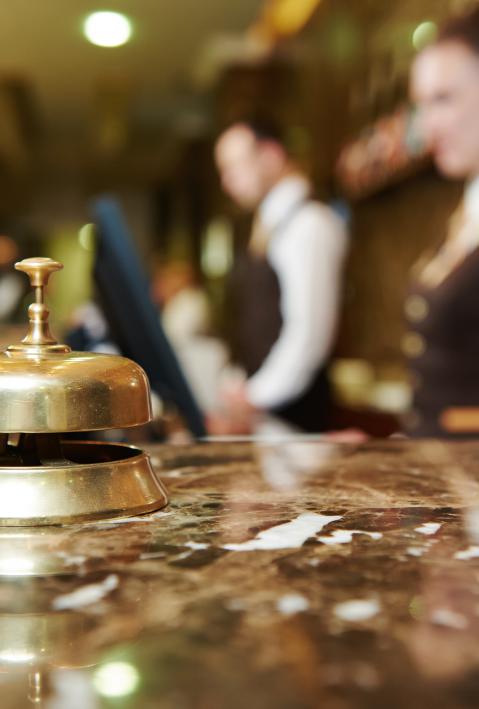
- Share by mail

Project region
- Federal Environment Agency (UBA)
Tourism in Germany is of great economic importance while also making a particularly important contribution to rural areas. Although the tourism industry has recently been focusing more and more on sustainable tourism, it is not yet widely available and its share of overall tourism cannot be reliably demonstrated. Against the background of the implementation of the Sustainable Development Goals (SDGs), the expansion of sustainable tourism services is also becoming increasingly important at the national level. In view of the high resource intensity of tourism, it is in the political interest to examine the relationship between sustainable tourism and the tourism industry as a whole, to strengthen existing sustainability efforts and to develop strategies to further increase the share of sustainable tourism.
The project looked at the actual share of sustainable tourism in the overall sector, the areas of the tourism industry where there is a need for action, and recommendations for action can be made for both the tourism industry and politics. To begin, a criteria-based definition for sustainable tourism has been developed. The tourism industry itself needs clear and action-relevant indicators in order to strategically implement the transformation process to sustainable tourism. In this way, the industry can therefore benefit from the project results. An important component of the project was to cultivate cooperation with industry representatives and to promote networking and cooperation within the sector.
The project partners, led by the Centre for Sustainable Tourism at the Eberswalde University of Applied Sciences (ZENAT), developed a concept and a method for collecting empirical information on the share of sustainable tourism in Germany. This was then applied as an example. The basis for this was the linking of the Tourism Satellite Account (TSA) with the Environmental Economic Accounts (UGR). Several workshops and conferences with experts from science, practice, and politics have discussed the results and identified the fields requiring action. In various discussions and strategy papers, recommendations for the further development of sustainable tourism as well as improved documentation of tourism statistics have been determined.
adelphi was leading the development of the indicators for determining sustainable tourism on the sector level as well as on the company level. The work was based on a comprehensive inventory and subsequent evaluation of existing accounting approaches as well as the identification of potential data sources.
By creating a uniform evaluation grid and evaluating the relevant data sources, it is possible for the to examine the status quo of tourism in Germany in the three dimensions of sustainability (ecology, economy, and society). This creates the basis for continuous monitoring and the accompanying further strengthening of sustainable tourism.

Jan Christian Polanía Giese

Always stay informed
Our latest adelphi insights straight to your inbox via our newsletter.
What We Think
This decade is crucial for the future of the planet.

adelphi is Europe’s leading independent think-and-do tank for climate, environment and development.

Follow us on:
- Mobility and Travel
Travelling in harmony with nature
Whether you are fans of cities, nature lovers or hungry for knowledge: here are three examples of how you can enjoy sustainable travel through Germany.
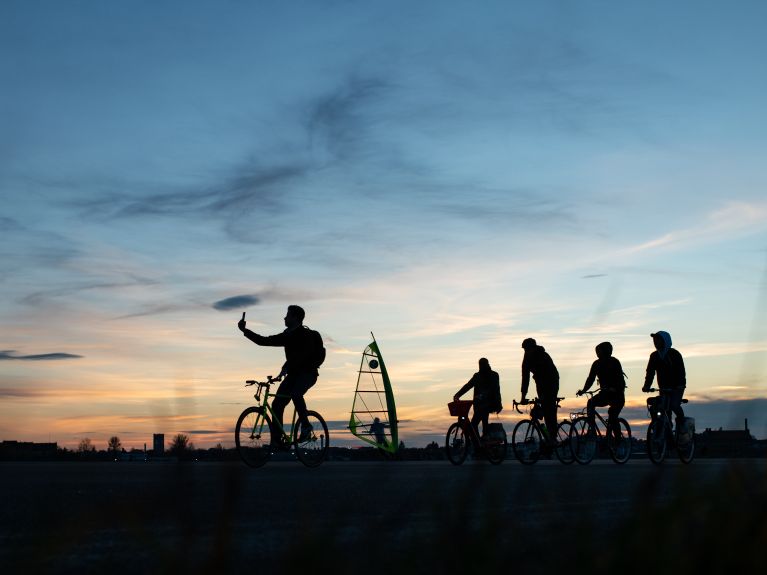
What does sustainable travel mean?
Sustainable travel is all about protecting the environment . If you want to travel more sustainably, you should aim for example to minimise your resource consumption and carbon emissions.
However, sustainable travel can also mean respecting the culture of the host community and supporting local people, for example by choosing a small locally run hotel rather than an international chain, as this ensures that profits remain in the region.
For city fans: Green Berlin
The German capital is very easy to explore in an eco-friendly manner – for example by bike , either as part of a guided bike tour or on your own. How about doing a circuit of the huge Tempelhofer Feld, the renatured former airport in the heart of the city?
If you are looking for vegan restaurants or eateries that use regional products, you will be spoilt for choice. The Green Me Berlin platform provides an initial overview and offers numerous ideas for your sustainable Berlin city break. We recommend for example a visit to Klunkerkranich , an urban gardening project on the park deck of a shopping centre – featuring spectacular views, a bar and a café.

Dieses YouTube-Video kann in einem neuen Tab abgespielt werden
Third party content.
We use YouTube to embed content that may collect data about your activity. Please review the details and accept the service to see this content.
Piwik is not available or is blocked. Please check your adblocker settings.

For nature lovers: The Wadden Sea
The Wadden Sea on the North Sea coast is an exceptional natural landscape. A site of UNESCO Natural World Heritage, it stretches across three of Germany’s states: Schleswig-Holstein , Hamburg and Lower Saxony . From hotels and electric cars to restaurants, there are numerous sustainable travel options there.
Fancy a walk on the seabed without having to dive? This is possible twice a day at low tide. As it can be very dangerous to get caught by the incoming tide, you should definitely only explore the Wadden Sea by taking a guided tour!
For those hungry for knowledge: The Klimahaus Bremerhaven
A sustainable lifestyle aims to protect the environment and the climate and ultimately preserve our quality of life. But where does climate change come from? And how is the weather related to the climate? You can find the answers to these questions at the Klimahaus Bremerhaven . Along the eighth meridian east, you can explore various climate zones there and discover how to protect the climate.
You will find great tips, lots of suggestions and all the information you need for your vacation in Germany at Germany Travel .
© www.deutschland.de
You would like to receive regular information about Germany? Subscribe here:
- Newsletter #UpdateGermany
Related content
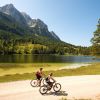

Tourism in Germany
Disclaimer: Some posts on Tourism Teacher may contain affiliate links. If you appreciate this content, you can show your support by making a purchase through these links or by buying me a coffee . Thank you for your support!
Tourism in Germany is big business. But why is tourism so important here and how should it be managed? Read on to find out…
Germany, with its rich history and diverse landscapes, is a prime destination for travellers worldwide. From the bustling streets of Berlin to the serene Black Forest, the country offers a unique blend of cultural and natural attractions. In this article, I aim to provide an overview of Germany’s tourism highlights, guiding visitors through its multifaceted appeal.
Geography of Germany
Germany is located in Central Europe and is bordered by nine neighbouring countries, including Denmark to the north, Poland and the Czech Republic to the east, Austria and Switzerland to the south, and France, Belgium, Luxembourg, and the Netherlands to the west. Germany’s landscape is diverse and includes low-lying areas, highlands, and mountain ranges. One of the most prominent features of Germany’s geography is the North German Plain, which stretches from the Netherlands to Poland and is characterised by rolling hills, forests, and farmland.
In the north of Germany, there are several notable bodies of water, including the North Sea and the Baltic Sea. The North Sea has a coastline that extends along Germany’s northern border, while the Baltic Sea is situated to the northeast of the country. Along the Baltic coast, there are many beautiful beaches and harbours, which are popular tourist destinations in the summer months. The country’s major port cities, such as Hamburg and Bremen, are also located in this region, due to their proximity to the North Sea.
Central Germany is characterised by numerous low mountains and hills, such as the Harz Mountains, the Thuringian Forest, and the Black Forest. This region is home to several major rivers, including the Rhine, the Moselle, and the Danube. The Rhine is one of the longest and most important rivers in Europe and is a major transport route for cargo ships. The river flows from Switzerland through Germany and the Netherlands, eventually emptying into the North Sea. Along the river, there are many picturesque towns and cities that are popular tourist destinations.
To the south of Germany, there are the Alps, which are a mountain range that stretches across several European countries, including Austria, Switzerland, France, and Italy. In Germany, the Bavarian Alps are the most prominent, with peaks reaching over 2,700 metres. The region is known for its stunning natural beauty, with numerous lakes and rivers, and is a popular destination for winter sports, including skiing and snowboarding.
Overall, Germany’s geography is diverse and includes a wide range of landscapes, from low-lying plains to high mountain ranges. The country’s position in central Europe, as well as its numerous rivers and coastlines, has made it an important transport hub, and it’s beautiful natural scenery continues to attract tourists from all over the world.

Tourism Industry in Germany
The tourism industry is an important sector of the German economy and has been growing steadily in recent years. According to statistics from the German National Tourist Board, more than 37 million visitors travelled to Germany in 2019, generating almost 90 billion euros in revenue. The tourism industry provides employment opportunities and generates income for a broad range of businesses, including hotels, restaurants, transportation companies, and cultural attractions.
Germany’s tourism industry is supported by its rich cultural heritage, stunning natural scenery, and modern infrastructure. The country is home to a multitude of historical sites, including the Brandenburg Gate, Neuschwanstein Castle, and the Berlin Wall, which attract visitors from all over the world. In addition, Germany has a thriving arts and cultural scene, with world-renowned opera houses, museums, and galleries.
Germany’s natural attractions are also a major draw for tourists. The country has hundreds of beautiful parks, gardens, and nature reserves, including the Black Forest, the Bavarian Alps, and the North Sea coast. There are many opportunities for outdoor recreational activities, such as hiking, cycling, and skiing.
The German tourism industry is also supported by the country’s excellent infrastructure, including world-class airports, modern railway systems, and well-maintained roads. This makes travel around the country convenient and efficient. In addition, Germany has an extensive network of hotels, guesthouses, and other accommodation options, ranging from budget to luxury, which cater to the needs of a diverse group of travellers.
As Germany continues to invest in its tourism infrastructure and promote its cultural, natural, and historical attractions, the tourism industry is expected to continue growing and contributing significantly to the country’s economy in the years to come. By providing visitors with high-quality experiences and services, Germany’s tourism industry has the potential to become an even more important part of the country’s economic future.

Statistics of Tourism in Germany
Now lets highlight a few ket statistics about tourism in Germany:
1 – In 2019, Germany welcomed over 89.9 million overnight visitors, making it the seventh most visited country in the world.
2 – The tourism industry in Germany generated €131 billion of revenue in 2019, accounting for 4.5% of the country’s GDP.
3 – The tourism industry in Germany employs over 3 million people, or 7.5% of the country’s workforce.
4 – The top five source markets for tourism in Germany are the Netherlands, Switzerland, the United States, the United Kingdom, and Austria.
5 – The most popular cities for tourism in Germany are Berlin, Munich, Frankfurt, Hamburg, and Cologne.
6 – In 2019, the average length of stay for visitors to Germany was 3.1 nights.
7 – The most visited tourist attractions in Germany are the Cologne Cathedral, Neuschwanstein Castle, the Berlin Wall, and Europa-Park.
8 – In 2019, approximately 35% of all overnight stays in Germany were in hotels, while 31% were in private accommodation, and 18% were in holiday homes or apartments.
9 – Germany is a popular destination for cultural tourism, with over 25,000 museums and galleries, and numerous historical sites and cultural events
10 – Germany is also a popular destination for outdoor tourism, with over 130,000 kilometres of hiking and cycling trails, numerous ski resorts, and hundreds of parks and nature reserves.

Popular Tourist Attractions in Germany
Germany boasts a vast array of tourist attractions, from historical landmarks and cultural treasures to stunning natural landscapes and beloved amusement parks. Some of the most popular tourist attractions in Germany include:
The Brandenburg Gate
As a symbol of Germany’s tumultuous past, the Brandenburg Gate is one of the most iconic landmarks in the country. Standing tall in the heart of Berlin, this neoclassical monument was built in the 18th century and has played a central role in many of Germany’s most significant political events.
Neuschwanstein Castle
Nestled in the German Alps near the town of Füssen, Neuschwanstein Castle is widely regarded as one of the most beautiful castles in Europe. Built in the 19th century by King Ludwig II of Bavaria, the castle’s enchanting design and fairy-tale setting are sure to leave visitors spellbound.
Europa-Park
Located in Rust, Europa-Park is Germany’s largest theme park and one of the most popular attractions in the country. With over 100 rides, shows, and attractions spread over 95 hectares, the park offers something for everyone, from thrill-seekers to families with young children.
The Berlin Wall
The Berlin Wall was a concrete barrier that divided the city from 1961 to 1989, separating East and West Germany during the Cold War. Today, visitors to Berlin can see remnants of the wall throughout the city, including the iconic “Checkpoint Charlie” crossing point and the Berlin Wall Memorial, which provides a powerful testament to Germany’s complex history.
Cologne Cathedral
One of the most impressive Gothic structures in Europe, Cologne Cathedral is a UNESCO World Heritage Site and a must-see for architecture enthusiasts. Built over the course of six centuries, the cathedral’s stunning facade and intricate stained glass windows are sure to leave visitors awestruck.
The Romantic Road
Stretching over 350 kilometres from Würzburg to Füssen, the Romantic Road is one of Germany’s most scenic drives. Along the way, visitors can explore charming mediaeval towns, picturesque countryside, and stunning castles and palaces, including Neuschwanstein Castle.
The Black Forest
Located in southwestern Germany, the Black Forest is a stunning natural landscape that boasts picturesque villages, dense woodland, and stunning waterfalls, making it a popular destination for hikers and nature lovers alike.
Germany offers an endless list of attractions and experiences for visitors, from historical landmarks and cultural treasures to delightful cuisine and outdoor adventure. These popular tourist attractions are just a few examples of the unique and diverse offerings available in this remarkable country.

Popular Types of Tourism in Germany
Germany is a highly diverse country that offers a wide variety of tourism experiences for visitors. Some of the most popular types of tourism in Germany include:
Cultural Tourism
Germany is home to a wealth of cultural treasures and relics, from world-renowned opera houses and museums to historic castles and fortresses. The country’s capital, Berlin, offers a wealth of cultural experiences, including art exhibitions and musical performances, while cities like Munich and Frankfurt are known for their world-class museums and galleries. Other cultural attractions to explore include the medieval town of Rothenburg ob der Tauber, the famous Schönbrunn Palace in Vienna, and the ancient Roman city of Trier.
Ecotourism and Outdoor Activities
Germany is a haven for those who enjoy outdoor activities and nature-based tourism. With a host of stunning natural landscapes, from the majestic Alps to the rolling hills of the Swabian Jura, visitors can hike, bike, swim, rock climb, and more all year round. Popular ecotourism destinations include the Black Forest, the Bavarian Alps, and the Wadden Sea, a UNESCO World Heritage Site and one of the largest unbroken systems of intertidal sand and mud flats in the world.
Historical Tourism
Germany has played a key role in European history and is home to a wealth of historical monuments, museums, and landmarks. Historic destinations like the Reichstag Building in Berlin, the Bavarian castles of Neuschwanstein and Hohenschwangau, and the Nuremberg Castle are just some of the historical sites worth visiting when in Germany.
Festival Tourism
Tourism in Germany has a reputation for throwing unique and lively festivals throughout the year, many with a strong cultural and historical significance. The famous Oktoberfest is held annually in Munich and is one of the largest beer festivals in the world. Other notable events include the Berlin Film Festival and the Christmas markets that sprinkle the country throughout the Advent period each year.
Food and Wine Tourism
With a great tradition of local cuisine and world-renowned beer and wines, Germany is the ideal destination for food and wine lovers. Visitors can enjoy traditional German dishes such as schnitzel and spaetzle, while wine enthusiasts can explore the vineyards and wineries in the Moselle Valley or the Baden Wine Route.
In conclusion, tourism in Germany offers visitors a diverse range of tourism experiences, making it an appealing destination for a perfect European vacation. From exploring the country’s rich cultural heritage and stunning natural beauty to outdoor activities and festivals, there are plenty of reasons to visit Germany.
Economic Impacts of Tourism in Germany
The tourism industry is an essential part of the German economy, generating substantial economic impacts at both national and regional levels. In 2019, the sector contributed €131 billion to the country’s GDP, accounting for 4.5% of the total. The industry also indirectly supports various other sectors of the economy, including transportation, retail, and construction.
The tourism industry also serves as a significant source of employment, providing jobs for over 3 million people, representing 7.5% of total employment in Germany. These jobs are spread throughout a broad range of businesses, including hotels, restaurants, transportation companies, and cultural attractions, among other sub-sectors.
Furthermore, the tourism industry is a significant contributor to the country’s exports. Germany is the seventh most visited country globally, receiving over 89.9 million tourists in 2019, with the tourism sector accounting for approximately 10% of the country’s total exports. The revenue generated by the industry enables the country to maintain a positive trade balance and create more job opportunities in related sectors.
Beyond its direct economic effects, the tourism industry also has important indirect effects on other sectors of the economy. These include transportation, retail, and construction, among others, as tourists spend money to purchase goods and services and create new demand for infrastructure and facilities.
Overall, tourism in Germany continues to be a vital part of the economy, providing a significant source of income and employment for the country. By investing in infrastructure and services to attract more visitors, Germany can continue to benefit from a thriving tourism industry while also improving living standards and driving long-term economic growth.

Social Impacts of Tourism in Germany
The tourism industry in Germany is not only an essential contributor to the country’s economy but also has significant social impacts that can be both positive and negative.
Positive Impacts:
Tourism in Germany provides a unique opportunity for visitors to experience the cultural heritage, traditions, and lifestyles of locals, which can further promote mutual understanding and cultural exchange. This exchange of knowledge and experience may help to reduce misunderstandings and ease social and political tensions between different nations.
Tourism in Germany also encourages the preservation of natural and cultural treasures as they contribute to the attractiveness of destinations. Tourism can provide local communities with the resources and the incentives to preserve and maintain natural and cultural sites, which can also have spin-off benefits for local conservation efforts.
Additionally, tourism can stimulate economic development in rural areas, less developed regions, and areas with little industrial production, creating employment opportunities for local communities and helping to reduce poverty rates.
Negative Impacts:
Tourism in Germany can lead to overcrowding in popular tourist destinations, which can cause tension between locals and visitors. It can also contribute to environmental damage, negatively impacting local ecosystems, habitats, and biodiversity.
Tourists may also create an increase in prices of goods and services in the area, which can result in a decrease in the standard of living for local communities. Furthermore, the commodification of local cultures and traditions to meet the expectations of tourists can lead to cultural erosion and homogenization, thus undermining the uniqueness and diversity of local cultures.
In conclusion, the social impacts of tourism in Germany are complex and involve both positive and negative aspects. To mitigate the negative social impacts of tourism and optimise the positive ones, it is crucial to balance tourism’s benefits and impacts carefully. All stakeholders, including local communities, tourists, and government agencies, must work together to ensure that the tourism industry is sustainable and responsible, promoting cultural exchange, environmental conservation, and economic growth.
Environmental Impacts of Tourism in Germany
The tourism industry in Germany has significant environmental impacts due to the large number of visitors and the activities they engage in while travelling. Some of the key environmental impacts of tourism in Germany include:
Energy consumption
The tourism industry is an energy-intensive sector that requires transportation, accommodation, and recreational activities. The consumption of energy in transportation, accommodation, and leisure puts pressure on the environment as large amounts of energy are required for heating, cooling, and lighting, as well as for transportation.
Greenhouse gas emissions
The tourism industry is a significant contributor to greenhouse gas emissions, which contribute to climate change. In Germany, the transportation sector accounts for approximately one-fifth of total greenhouse gas emissions, a significant proportion of which is due to tourism transport.
Water resources
The tourism industry consumes significant amounts of water for various activities, including bathing, swimming pools, and irrigation. This consumption puts pressure on water resources in areas where water is already scarce.
Waste management
Tourism activities generate significant amounts of waste, including packaging, food waste, and disposable items. Improper handling and disposing of this waste can have severe environmental consequences, including pollution of land, air, and water.
Biodiversity
Tourism activities can have a profound impact on local biodiversity, particularly in ecologically sensitive areas. Activities such as hiking, camping, and off-road driving can cause damage to fragile ecosystems, leading to soil erosion, habitat loss, and the displacement of wildlife.
However, there are efforts to mitigate these negative environmental impacts by promoting sustainable tourism practices. Examples of initiatives to promote sustainable tourism in Germany include the use of renewable energy sources, energy efficiency measures in tourist accommodations, promoting eco-friendly modes of transportation, and initiatives to reduce waste and conserve water. The introduction of sustainable tourism practices helps to minimise environmental impacts while ensuring that the tourism industry remains a valuable contributor to the German economy.

FAQs About Tourism in Germany
Now that we know a bit more about tourism in Germany, lets answer some of the most common questions on this topic:
1 – What is the best time of year to visit Germany?
The best time to visit Germany varies depending on what you want to do and see. The summer months (June to August) are popular for sightseeing and outdoor activities, while winter (December to February) is great for skiing and visiting Christmas markets.
2 – Do I need a visa to travel to Germany?
Travellers from many countries, including the US, Canada, and Australia, can enter Germany without a visa for stays of up to 90 days. Check with the German embassy in your country to see if you need a visa.
3 – What is the currency used in Germany?
Germany uses the euro (EUR) as its currency.
4 – Is English widely spoken in Germany?
English is widely spoken in Germany, particularly in tourist areas, so it’s easy to get by without speaking German.
5 – How can I get around Germany?
Germany has an excellent public transportation system, including trains, buses, and trams. You can also easily rent a car or bike to get around.
6 – What are some famous German foods?
Some famous German foods include sausages, schnitzel, pretzels, and black forest cake.
7 – What are some popular German festivals?
Some popular German festivals include Oktoberfest, Karneval (Carnival), and Weihnachtsmarkt (Christmas Markets).
8 – What are some popular tourist destinations in Germany?
Some popular tourist destinations in Germany include Berlin, Munich, the Romantic Road, Cologne, and the Black Forest.
9 – Is tipping expected in restaurants in Germany?
Tipping is not usually expected in Germany, but rounding up to the nearest euro is appreciated.
10 – What is the voltage and plug type in Germany?
The voltage in Germany is 230V and the plug type is type C and type F. You may need a universal adapter to use your electronic devices in Germany.
To Conclude: Tourism in Germany
Germany, with its tapestry of historical landmarks and modern innovation, remains an essential destination in the European travel circuit. As we’ve journeyed through its attractions, from bustling cities to tranquil countryside, the enduring appeal of German tourism becomes evident. For both the seasoned traveller and the curious explorer, Germany promises a rich blend of culture, nature, and history, continually inviting renewed exploration.
If you enjoyed this article about tourism in Germany, I am sure you will love these too:
- Top 20 of Germany’s castles
- 50 Most Important Landmarks in Germany (with photos)
- The 10 Most Impressive Rivers in Germany
Liked this article? Click to share!
- International edition
- Australia edition
- Europe edition

Readers’ favourite trips in Germany: ‘We wandered every cobbled street and climbed every gothic tower’
From the Baltic to Bavaria, via Berlin, our tipsters enjoy epic scenery and architecture, culture and steins of fabulous German beer
Literary Lübeck
Lübeck – Queen of the Hanseatic League – has a fading charm and vulnerability absent from the likes of Berlin, Munich and Hamburg … and most of Germany. I loved my trip there, wandering the cobbled streets, climbing every brick gothic church tower – generally alone! Thomas Mann wrote the unbearably sad novel Buddenbrooks there, then fled to the US from nazism in 1939. The Tin Drum author Günter Grass lived and worked in Lübeck in later life. Visit their former houses, now museums, the Grass-Haus and the Buddenbrook Haus . A singular German city, full of history and significance. Martin Charlesworth
Gothic marvel of Marburg, Hesse

Marburg, the small, ancient university town about an hour by train north of Frankfurt, is a fairytale destination, not least because it was once home to the Brothers Grimm . Every cobbled lane leads uphill to the castle, which looms above Marburg’s timber-framed Oberstadt. The castle was host to Martin Luther in 1529, and the Elisabethkirche, one of Germany’s earliest gothic churches, was an important medieval pilgrimage site. One of the main attractions is at the town hall, where, at midday, locals and visitors congregate to witness a brass cockerel (the Gockelhahn ) flap its mechanical wings to mark the hour. Anna
Brilliant viewing tower, Stuttgart

For a viewing tower that outdoes Berlin, take one of the little yellow trams, which then become a funicular, up Stuttgart’s spiralling streets. The views from the tower towards the Black Forest are stunning, and the external viewing platform will have you wondering whether it is gently swaying, or if it’s just your knees wobbling. Stuttgart is a leafy city with great art at the Kunstmuseum and archaeological finds at Landesmuseum Württemberg , and the Swabian cuisine and wines in the local Weinstuben are lighter and tastier than in many other major cities. Tim Proctor
Readers' tips: send a tip for a chance to win a £200 voucher for a Coolstays break
Guardian Travel readers' tips
Every week we ask our readers for recommendations from their travels. A selection of tips will be featured online and may appear in print. To enter the latest competition visit the readers' tips homepage
Monastic day trip from Munich

About 25 miles south-west of Munich is Andechs Monastery – Bavaria at its most idyllic and authentic. Sitting atop Ammersee (Lake Ammer), this Benedicitine monastery and pilgrimage church is popular for its brewery, restaurant and beer garden. It makes the perfect day out: take the S-Bahn from Munich to Herrsching, then hike 40 minutes gently uphill through lovely forest. On arrival, reward yourself with steins of great beer and Bavarian fare. Call into the beautiful St Martin’s church on your way back down to Herrsching, where you can have an ice-cream by the shores of the lake (or take a dip) and watch the boats before returning to Munich. Sonutschka
Culture and art in Nuremberg

If you can, spend time in the beautiful city of Nuremberg, with its amazing museums: the Germanische Nationalmuseum is the equivalent of the British Museum and is the largest German cultural history collection. The Neues Museum has an impressive collection of paintings by renowned visual artist Gerhard Richter and the Zukunftsmuseum is a great science museum. Stay at the Karl August hotel (doubles from €159 room only) with its stunning modern design, spectacular spa area, friendly staff and delicious breakfast (€28, served – instead of buffet – to minimise food waste). Till
A bike ride by the Baltic via Rostock

I had a brilliant time in Germany last summer cycling the Baltic Sea Cycle Route . I put my own two-wheeler on the train at Birmingham and got off in Wismar, northern Germany, then followed the well-signposted route around the charming seaside village of Kühlungsborn. I stopped for a bit of beach time at Warnemünde and had some sardine sandwiches and delicious soft Baltic Berry ice-cream from simple seaside cafes. Rostock is a lovely Hanseatic city with some stern old stone buildings. From here I put my bike on a ferry to car-free and calm Hiddensee island for a couple of quiet nights. Going back to the mainland, Sellin welcomed me with grand elegant villas and an art deco-style 1920s pier and a great footpath under the striking chalk cliffs of the Jasmund national park. I finished my trip by sitting on the white chalk “King’s Chair” (Königsstuhl) cliff, gazing out to sea – feeling like a king. Bill
after newsletter promotion
Touring Reformation country south of Berlin

In 1517, Martin Luther nailed his 95 Theses to the door of the Schlosskirche in Wittenberg , forever changing the western world by kicking off the Reformation. Exploring this corner of eastern Germany will reveal beautiful towns and vibrant cities rarely visited by western tourists. Wittenberg, 60 miles south-west of Berlin, itself is a medieval marvel on the River Elbe. Off the beaten track is Eisleben, a half-timbered town where you can visit Luther’s birthplace. The Wartburg is an imposing castle towering over Eisenach. Finish your trip in Halle , a vibrant university city near Leipzig. Luther’s death mask can be seen in the Market Church, where he also gave some sermons. Here, another great German, composer George Frederick Handel, was baptised and played the church’s organ when studying. Wilhelm Friedemann Bach, eldest son of Johann Sebastian, was organist here from 1746 to 1764. Nick
Punk ethos and Turkish delights, Kreuzberg, Berlin

Berlin’s large Turkish community has left an indelible mark on the culinary and artistic culture of the city as a whole, and it is in the neighbourhood of Kreuzberg where this unique fusion is best experienced. Start with a meal at Mardin restaurant , which serves the best kebabs I’ve had outside Turkey, along with perfectly frothy ayran – a salty yoghurt-based drink. Afterwards, find a concert at one of many characterful venues. SO36 , named for the area’s cold war era postcode, began life as a punk venue, but has now also become a centre for Turkish and queer culture – I was fortunate enough to see the psychedelic pop singer Melike Şahin here. The venue has retained its punk ethos and remained firmly rooted in the local community while also playing host to Turkish and other international stars in a wonderfully intimate, hole-in-the-wall setting, which wears its history of artistic and political radicalism with great pride, epitomising the multicultural Berlin with which I fell in love. Bruno
Cologne beyond the cathedral

I really enjoyed Cologne while visiting my daughter. It’s such a relaxed city, with a large student population. Away from the incredible gothic cathedral – Germany’s most popular attraction – there’s history to be discovered in all sorts of places that are best explored by bike on cycle lanes and routes through numerous parks. The city museum , Kölnisches Stadtmuseum, which recently moved to Minoritenstraße, is a good start. Some places are beautiful, such as the botanical garden with its French baroque, English landscape and Italian renaissance spaces. Others are less so, such as the brutalist Kirche Christi Auferstehung (Church of the Resurrection) until you step inside. It’s very thought-provoking, typical of a city shaping its future from a difficult past. And there are the art museums, concert hall, the Rhine and two parkruns. Mark Anstee
Winning tip: oompah bands and lager on Königssee, Bavaria

Last summer my partner and I camped and railed around Germany, utilising the €49 Deutschland-Ticket offering unlimited public transport, countrywide, for a month. A highlight was exploring Königssee in the Berchtesgadener national park, Bavaria. This small resort offers fantastic hiking and biking routes of varying difficulty levels. In summer, whether you have climbed on foot or taken the Jennerbahn cable car , beer garden season is in full swing so you can toast atop the mountain with an oompah band playing and a cold stein in hand. Königssee lake is fed by icy-clear glacier water, ideal for an invigorating swim, and you can explore further into the park by boat. Campsite Mühlleiten is 40 minutes by bus from Salzburg and connected by rail to Munich (Berchtesgaden station is a 40-minute walk away, or 10 minutes on the bus). Enjoy, and try the Berchtesgadener hell ! Becky

- Germany holidays
- Readers' travel tips
- Europe holidays
Comments (…)
Most viewed.

Cruise ships represent a 'game changer' for Mackinac Island tourism industry
M ACKINAC ISLAND, Mich., (WPBN/WGTU) -- For Michiganders, a Mackinac Island day trip means driving to Mackinaw City and taking a ferry.
But international tourists are coming by cruise ships as part of trips spanning the Great Lakes.
- Also read: Mackinac Island Police set to crackdown on electric bicycle use
At the Mission Point Resort, the Viking Octantis is docked just offshore.
And at a news conference at Mackinac Island, Great Lakes Tourism leaders gave their outlook for the 2024 cruising season.
Anna Tanski, of Cruise of the Great Lakes, said they expect about 20,000 visitors on a few different cruise lines, a 50% increase economically from previous years.
Many cruisers are European, often coming from Germany, the U.K. and Ireland.
Looking ahead further, Tanski said another cruise line will be docking in the Straits.
"Victory Cruise Lines will be returning," Tanski said. "They were previously under the flag of American Queen Voyages. They will be operating two vessels on the Great Lakes in 2025."
"Viking was a game changer," said Tim Hygh, the CEO of Mackinac Island Tourism. "There's a prestige factor. There's a real sexiness about having a cruise ship outside of your resort."
"We don't have any brand hotels on Mackinac Island. We're mom and pop places that are really trying to make things go," Hygh said. "So when people read about cruise ships arriving on the island, that gives us a certain amount of credibility that we might not have had before if its someone that doesn't know anything about Mackinac Island."
Tanski was asked about the potential for "over tourism" and said 20,000 visitors is sustainable with room to grow.
She said ports are developing and ships are being built.
Tanski also said that while the ships are rather large, many ships will be smaller with more intimate experiences.

Privacy settings
Here you will find an overview of the types of cookies used on the website. You can set your consent for each category individually. Further information can be found in the privacy policy .
- Essential Cookies For the use of the website with all functions (e.g. user settings, watch lists, etc.)
- Statistics Statistics Cookies collect information anonymously. This information helps us to understand how our visitors use our website.
- Marketing In order to provide you with the best possible offer in cooperation with our partners, we use marketing tools. For example, in order to use our chatbot, you must activate this setting.
- External contents Required for viewing external media and third-party content. The provider may set cookies for its part. The respective data protection regulations of the provider apply.
- Inspiring Germany
- Cities & Culture
- Nature & Outdoor Activities
- Royal Palaces & Castles
- Experience & Enjoy
- Current highlights
- Sustainable travel
- Barrier-free travel
- Easy language
- Federal states
Good chances for tourism restart in 2022
Dear reader,
As we ease our way into 2022, we say goodbye to a year that has given us plenty to think about. We know that the current situation remains extremely difficult for many of our partners in Germany’s inbound tourism sector and in the international travel industry.
At the moment, it is difficult to predict how the pandemic will develop, both at home and in our many international source markets. The situation for the global travel industry remains challenging as we look forward to the year ahead.
2021 was the second year in a row that coronavirus was the defining influence on international tourism. Hopes for a swift end to the crisis thanks to the development of vaccines were dashed by the emergence of new virus variants. As a result, any optimism that we might see a rapid recovery of travel during the summer months was met by the harsh reality of the third and fourth waves in the autumn.
Where do we go from here? Has all the hard work of the market players been for nothing? When will the many innovative approaches and ideas for making travel safer again finally reap rewards? Or will further waves keep setting us back?
Will 2022 bring a turnaround out of the crisis and into a future that seamlessly builds on the successes of the past?
In early 2021, we were talking about a year of transition. And it was, but on a significantly broader level. While the forecasts at the beginning of the year were still dominated by the question of when which source market and which travel segment would return to pre-crisis levels, we are now talking about profound changes across the industry that will be critical for our future.
Many studies show that the future of tourism will look different from what we might have imagined not that long ago. The main takeaway from two years of the pandemic is that the huge impact that coronavirus has had on international tourism will not be easily overcome.
The long-term objective has already been outlined in the position paper adopted by the German government in April 2019 to provide a framework for the national tourism strategy:
“We strive for quality tourism that works in harmony with nature and culture to create and maintain spaces worth living in, enhances the quality of life of visitors and local residents alike, and has a positive impact on Germany’s image abroad.
We want to establish a digital infrastructure and modern, accessible, reliable and sustainable transport that take the travellers’ needs and the challenges of growing traffic into account.”
Given the significant fall in revenues in the tourism sector, the aim of the restart is to boost the competitiveness not only of Germany as a travel destination but also of its tourism industry, which predominantly consists of small and medium-sized enterprises, and thus increase value creation at a domestic level.
Today, I would like to share with you an assessment of key trends that have emerged and accelerated over the two years of the pandemic: How is the context in which the international tourism industry operates changing? What consequences and what opportunities might arise from this for inbound tourism to Germany in the coming years?
1. International desire to travel
Market research institutes have been studying the impact of the pandemic on travel behaviour for over two years now. The common thread running through the surveys is that the desire to travel has steadily increased worldwide despite repeated waves of coronavirus infections. Polls carried out by IPK International on behalf of the GNTB in 18 of Destination Germany’s source markets certainly confirm this trend.
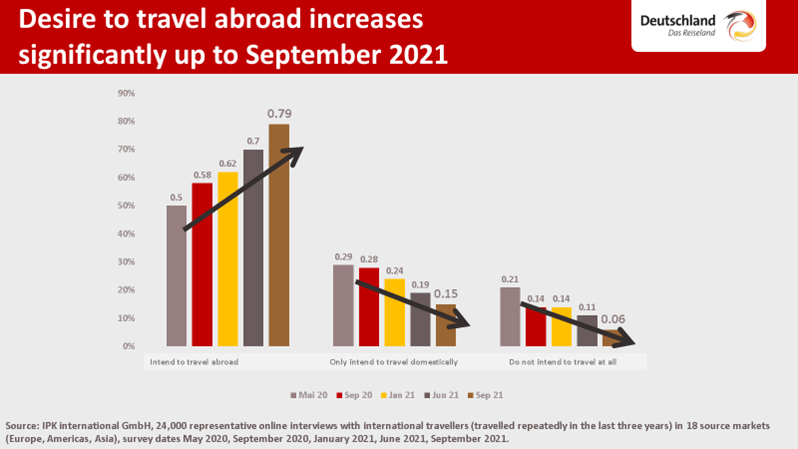

IMAGES
COMMENTS
Tourism providers in Germany are always developing new offerings for sustainable vacation experiences, with creativity and passion. Be inspired by these pages of selected travel ideas. Tip: Since most CO2 emissions occur during arrival and departure, a longer holiday is more environmentally friendly than multiple short trips.
Sustainable tourism in Germany Sustainability and climate neutrality will again feature heavily at the world's biggest travel trade fair, the 2022 International Tourism Exchange Berlin (ITB).
Demand for eco-tourism and sustainable travel is also growing in Germany. According to a 2021 study, three-quarters of German travellers see sustainable travel as important. More and more travel providers are using legally binding environmental and social standards in their branding, supported by the associated certificates and labels.
Experience nature sustainably: embrace Germany's unique landscapes! Three UNESCO natural World Heritage Sites, 16 UNESCO biosphere reserves, 16 national parks and 104 nature parks protect and preserve Germany's unique natural landscapes. Islands and coasts, towering mountains and thick forests, as well as thousands of lakes and rivers, can all ...
Centre for Sustainable Tourism (ZENAT) at Eberswalde University for Sustainable Development Schicklerstr. 5 16225 Eberswalde Germany . Report completed in: ... All in all, people in Germany now take holiday travel for granted, and attach consid erable importance to it (STIFTUNG FÜR ZUKUNFTSFRAGEN, 2017). In 2016, Germans spent over 88 ...
During the pandemic there was an increase in poaching. Over-tourism became a problem in countries, such as Germany, because of the increase in domestic tourism, especially in conservation areas close to large cities. Otherwise, things appear to have settled down again in many places and are almost the same as before the pandemic.
The Danube Competence Center (DCC) based in Belgrade aims to change that. It is promoting sustainable tourism jointly with the GIZ, Germany's agency for international cooperation, as its central partner. One key area involves strengthening the rail network and cycle and shipping routes as environmentally friendly alternatives to the car.
The German National Tourist Board offers in-depth information on sustainable travel in Germany, including important facts and lots of suggestions. Travel through national parks. Germany's 16 national parks are good destinations for people who want to enjoy an environmentally friendly vacation in natural surroundings.
Dresden Heath, known as the "green lung of Dresden," is a 19-square-mile nature preserve and recreation area with hiking trails and wild animals in the middle of town. The haven is a fantastic example of how Dresden, and Germany as a whole, protects nature and gives residents a place to renew their spirits. Elbe Meadows paths are a breath ...
The recovery of tourism in Germany has been moderate. In 2021 there were 96.8 million tourists (domestic and international), 1.3% lower than in 2020. Of these, 11.7 million were international tourists, and 85.1 million were domestic tourists. International tourists remained 70.5% below 2019 levels, and domestic tourists remained 43.8% down.
The 'Feel Good' campaign in the international source markets showcases sustainable, high-quality products with the aim of boosting the restart of inbound tourism." "Germany's towns ...
Marseille, France, 5 September 2021 (IUCN) - At the IUCN World Conservation Congress in Marseille, IUCN and the German development agency GIZ today announced a new programme to strengthen the resilience of community-based tourism in and around protected and conserved areas worldwide. Through the programme, the German government is investing up to 17 million Euros to boost the recovery from ...
Tourism in Germany continues to grow. The Tourism Satellite Account shows the sector directly generated over EUR 105 billion in the German economy, or 3.9% of total GVA in 2015. ... Create modern, accessible, reliable and sustainable digital infrastructure that takes account of tourists' needs, and of the challenges associated with an ...
Sustainable Travel and Ecotourism in Germany. Germans, with some justification, consider themselves in the avant-garde of green travel. In the postwar years they became a front-runner in preserving their environment and protecting nature. "Germans are known for recycling and reusing their natural resources," said Berlin activist Hans Welder.
Tourism in Germany is of great economic importance while also making a particularly important contribution to rural areas. Although the tourism industry has recently been focusing more and more on sustainable tourism, it is not yet widely available and its share of overall tourism cannot be reliably demonstrated. Against the background of the implementation of the Sustainable Development Goals ...
Three themes emerged as important for implementation of sustainable tourism in the German Alps: indicators of sustainable tourism, cross-border cooperation and stakeholder engagement. ... Middleton, A. Managing Ecological Balance. In Sustainability in Tourism; Springer Gabler: Wiesbaden, Germany, 2013; pp. 137-157. [Google Scholar] Morse, S ...
For nature lovers: The Wadden Sea. The Wadden Sea on the North Sea coast is an exceptional natural landscape. A site of UNESCO Natural World Heritage, it stretches across three of Germany's states: Schleswig-Holstein, Hamburg and Lower Saxony. From hotels and electric cars to restaurants, there are numerous sustainable travel options there.
5 - The most popular cities for tourism in Germany are Berlin, Munich, Frankfurt, Hamburg, and Cologne. 6 - In 2019, the average length of stay for visitors to Germany was 3.1 nights. 7 - The most visited tourist attractions in Germany are the Cologne Cathedral, Neuschwanstein Castle, the Berlin Wall, and Europa-Park.
Germany makes a conscious attempt to be sustainable and makes eco-friendly decisions. The German National Tourist Board (GNTB) promotes sustainability and has come up with strategic approaches.
The need for more sustainable tourism has long been recognised, and the COVID-19 pandemic precipitated renewed calls for large-scale and rapid transformation of the sector. Attractive as such calls were, implementing aspirations for more sustainable futures requires significant 'buy-in' from the demand side. Yet, substantive evidence of ...
Exploring this corner of eastern Germany will reveal beautiful towns and vibrant cities rarely visited by western tourists. Wittenberg, 60 miles south-west of Berlin, itself is a medieval marvel ...
Tanski was asked about the potential for "over tourism" and said 20,000 visitors is sustainable with room to grow. She said ports are developing and ships are being built.
Of the international travellers surveyed for the 2021 Sustainable Travel Report published by Booking.com, 61 per cent stated that the pandemic was motivating them to take a more sustainable approach to travel. ... foundation from which the German tourism sector can continue to drive forward its long-standing efforts to position Germany as a ...
Population and tourism growth has increased congestion, collisions, climate harming emissions, and transport inequities in the Okanagan Valley, British Columbia (B.C.), Canada. Surveys indicate a willingness among residents to switch from cars to public transit featuring better service levels and connections. We conducted an analysis on the economic feasibility of an Okanagan Valley Electric ...